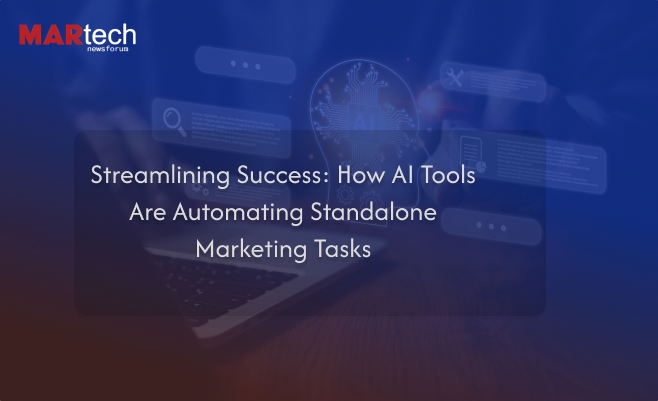
The marketing landscape is undergoing a radical transformation, and at the center of this evolution is artificial intelligence. Once viewed as a future-facing innovation, AI has now become a powerful force reshaping how marketing teams work — particularly when it comes to automating repetitive, standalone tasks that traditionally drained time and resources.
From generating personalized email copy to automatically segmenting audiences and optimizing ad placement, AI tools are driving a new era of operational efficiency — allowing marketing professionals to focus on strategy, creativity, and impact.
The New Reality of Marketing Automation
While marketing automation has existed for over a decade, most traditional platforms required extensive setup, human oversight, and manual content generation. Today, AI tools are moving beyond rule-based workflows and into smart automation, capable of making real-time decisions, adapting to patterns, and learning from data without human intervention.
Some of the most impactful standalone marketing tasks now being handled by AI include:
- Content Generation: Tools like Jasper, Copy.ai, and ChatGPT are creating headlines, product descriptions, email copy, and social media posts in seconds — saving countless hours of manual writing.
- Ad Creative Optimization: AI platforms analyze visual and textual elements of ads, test variations, and automatically deploy the best-performing creatives across channels.
- Audience Targeting and Segmentation: Machine learning models now detect customer behavior patterns and segment users dynamically, improving campaign relevance without manual sorting.
- Email Send Time Optimization: AI determines the most effective time for individual users to receive marketing emails — maximizing open and click-through rates with no guesswork involved.
- Social Listening & Sentiment Analysis: Natural language processing (NLP) tools monitor brand mentions, analyze customer sentiment, and alert teams to shifts in audience perception.
Why This Matters Now
The demand for speed, personalization, and ROI has never been higher. With shrinking budgets and rising expectations, marketing departments are being asked to do more with less. AI is emerging as the most practical solution to scale operations without scaling headcount.
According to a recent report by Forrester, 74% of CMOs are increasing investments in AI-powered marketing tools in 2025, with a majority focusing on automating standalone functions before fully integrating AI into end-to-end campaign strategies.
“AI isn’t replacing marketers — it’s amplifying them,” said Jamie Thompson, Chief Marketing Officer at Stratimark. “By automating the repetitive tasks, we’re freeing up our teams to focus on strategic initiatives and customer engagement.”
Standalone vs. End-to-End Automation
While long-term AI roadmaps include fully automated, intelligent marketing platforms, most companies are starting by automating specific, standalone tasks. This incremental approach reduces risk, delivers immediate ROI, and builds internal confidence in AI-driven workflows.
Examples of effective standalone use cases include:
- Using AI to generate subject lines for A/B testing.
- Automatically tagging user-generated content with relevant metadata.
- Real-time translation and localization of content for global audiences.
- Predictive lead scoring for sales and marketing alignment.
Each of these tasks, when automated, removes manual effort and shortens time-to-market — which is critical in today’s hyper-competitive digital landscape.
Risks and Realities
Despite the promise of AI automation, it’s not without challenges. Concerns around data privacy, model bias, and creative quality remain top-of-mind. Furthermore, over-reliance on automation can lead to generic or tone-deaf messaging if not properly monitored.
That’s why many experts emphasize the importance of “human-in-the-loop” workflows — where marketers supervise, guide, and refine AI-generated outputs to maintain brand integrity and customer trust.
“AI works best when humans steer the ship,” said Lina Wu, Director of Martech Innovation at CloudBridge. “Automation should support creativity, not suppress it.”
The Future of Task Automation in Marketing
As AI models grow more sophisticated, the scope of automatable tasks will only expand. Already, we’re seeing early signs of next-gen tools capable of:
- Real-time video generation from text prompts.
- Fully automated campaign deployment with budget optimization.
- AI-driven influencer discovery and contract negotiation.
What was once science fiction is now on the Martech roadmap.
Conclusion
Standalone marketing tasks are being transformed by AI — faster, cheaper, and more efficiently than ever before. While complete end-to-end automation may still be on the horizon, today’s AI tools are already delivering measurable benefits by streamlining high-volume, repetitive work.
Marketers who embrace these tools aren’t just saving time — they’re gaining a competitive edge. In the race for relevance and performance, automation isn’t an option — it’s a necessity.